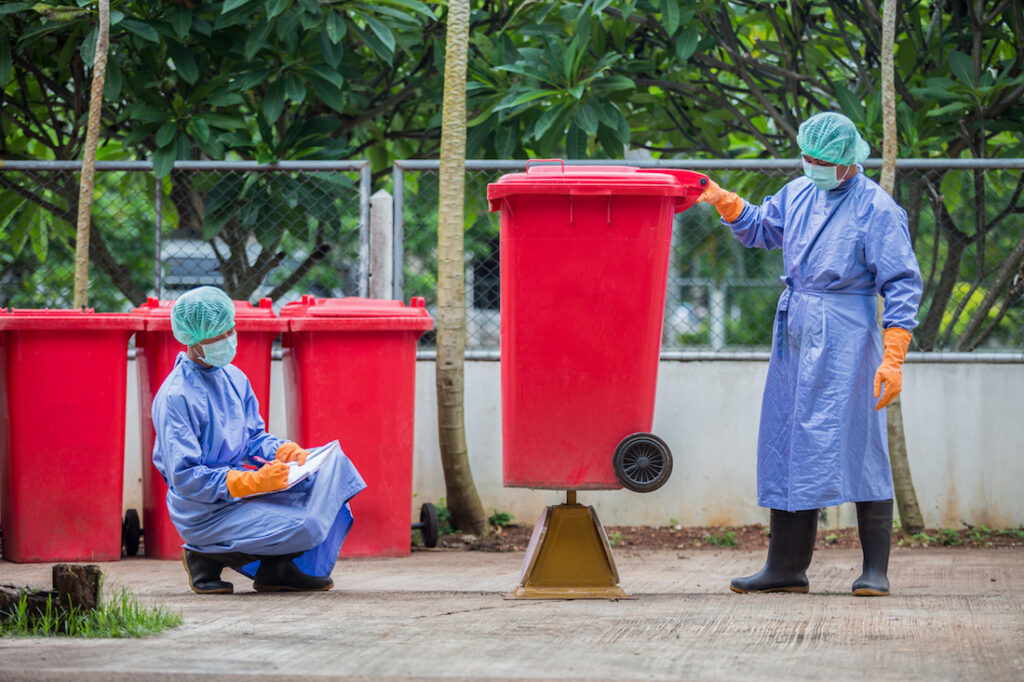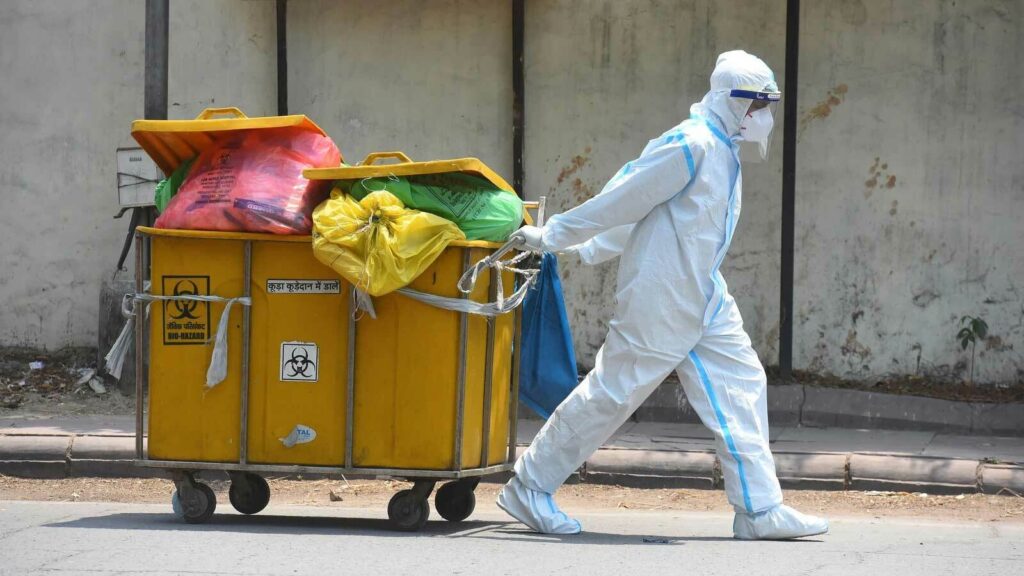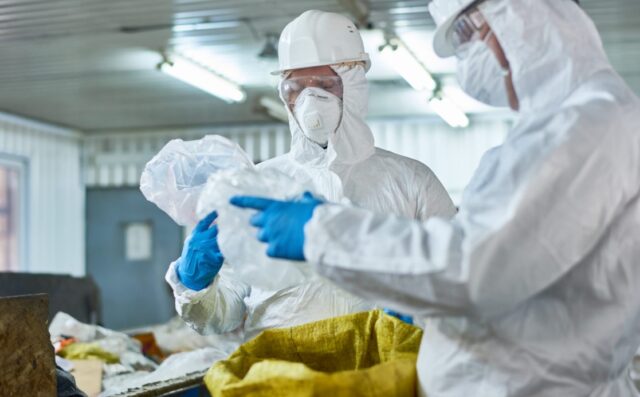With the increasing amount of medical waste, it’s becoming increasingly important to find new ways to safely and effectively dispose of this hazardous material.
So let’s start the journey towards a healthier future – one where we can reduce the amount of medical waste generated and its impacts on our environment.
Technologies for Effective Medical Waste Management
In order to ensure proper medical waste management, a number of technological solutions can be used. These technologies include thermal destruction systems, autoclaves, shredders and grinders for size reduction and treatment of it, disinfection systems for treating liquids and waste material, as well as containment units to segregate different types of it prior to disposal.
- Thermal destruction systems such as incinerators provide a highly effective way to eliminate the existence of infectious and hazardous materials in literals.
- Autoclaves are a reliable heat-based sterilization system that is effective in eliminating hazardous microorganisms from solid or liquid wastes while maintaining the integrity of the items being sterilized.
- Shredders are primarily used for reducing bulk items into fine particles prior to eventual disposal.
- Disinfection systems involve a variety of processes including advanced oxidation processes (UV/Ozone) and electrochemical oxidation (chlorination) to reduce the microbial load in different liquid or solid wastewaters.
- Containment units are necessary for safe segregation and storage before the final elimination of certain medical wastes depending on their potential hazard level.
When integrated with other necessary strategies such as regulatory compliance, education, and awareness training or proper disposal techniques programs, the use of these technologies can create complete solutions for effectively managing medical waste with maximum safety and minimum environmental impact.
Types of Medical Waste

It is classified into four main categories: hazardous, infectious, sharps, and pharmaceutical. Each type has different levels of risk associated with its disposal and often requires specialized containment and treatment before it is sent to a landfill. Knowing what type your healthcare facility produces can help you choose the best disposal solutions for your needs.
Hazardous waste refers to any material that is capable of producing risk in the environment or human health – such as chemotherapy agents or x-ray contrast media. The proper management and disposal of it must comply with all applicable local and federal regulations.
Infectious medical waste is any material that contains a pathogen – such as tissue cultures, used disposable surgical instruments, and pathological specimens. These materials must be handled differently than noninfectious items, as they pose a higher risk to human health if not adequately managed during the disposal process.
Sharps are needles and other instruments used in patient care activities that contain sharp points or edges – like syringes and lancets that have been contaminated by infectious agents or chemicals through use in patient care activities. It is imperative these materials are placed in approved storage containers prior to disposal for both safety reasons and regulatory compliance requirements.
Pharmaceutical Waste materials are categorized as drugs containing active pharmaceutical ingredients (APIs) such as pills or medications used internally or externally; unused pharmaceuticals returned from pharmacies; drug delivery system containers; new drug packaging from research facilities; diagnostic kits used to detect illnesses; skin creams; eye drops; etc. These materials must be disposed of properly to avoid pollution and contamination issues in water sources near landfills.
Challenges of Medical Waste Disposal

This type of disposal has long been a challenge for healthcare professionals, with some of the most common issues including:
Transportation and storage of medical waste
Transporting and securely storing medical waste can be difficult due to the hazardous nature of this type of material. In addition, medical facilities may need to take extra precautions to ensure that any contaminated instruments are stored safely until they can be disposed of properly.
Regulations and best practices
Healthcare facilities need to meet stringent regulations when disposing of medical materials, including adhering to local/national laws, regulations, safety standards, and best practices. Violating these standards could result in consequences that range from warnings and fines to criminal charges.
Cost
Proper disposal of medical waste can be costly due to the hazardous nature of the material and the additional steps required for safe transport and storage. Additionally, depending on where a facility is located, the cost of proper disposal will vary. For example, if a facility is located in a rural or remote area without many nearby providers or access points for safe disposal methods, additional fees may apply.
Regulations and Guidelines for Medical Waste Disposal

Broadly speaking, however, all facilities, regardless of size or type must comply with applicable legislation, guidelines, and international conventions related to safe disposal of it. Many states have adopted the US Environmental Protection Agency’s Medical Waste Tracking Act (MWTA) as the model form guidelines for safely disposing of medical waste.
The MWTA mandates that all medical wastes must be clearly identified as such before it leaves any location and disposers must take special precautions when handling it by:
- Maintaining detailed record-keeping on what is being transported including dates and places.
- Providing training to personnel handling or transporting it.
- Securing vehicles while hauling them.
- Properly label and store at the disposal location prior to ultimate destruction or long-term storage.
- Ensuring safe handling practices are followed at all times.
- Designating a responsible party responsible for management and transportation to appropriate off-site facilities.
- Providing notification if the transport sprung during transit.
- Performing complete surface decontamination before leaving a site if contamination has occurred during handling operations.
In addition to MWTA regulations, many other rules may apply depending on where your facility is located and what type of generator you are considered by your local regulatory body. Further guidance can be sought from local regulatory bodies governing not only human healthcare providers but also laboratories producing hazardous materials in order to ensure that all of them are properly labeled, drained, and safely disposed of into designated areas prior to leaving any facility.
Conclusion
Overall, proper medical waste management is necessary both for the environment and for our health. To maximize efficiency and ensure that waste is safely and responsibly disposed of, it is important to not only understand the laws surrounding medical waste management but also utilize technologies such as container tracking systems and other appropriate disposal methods.







